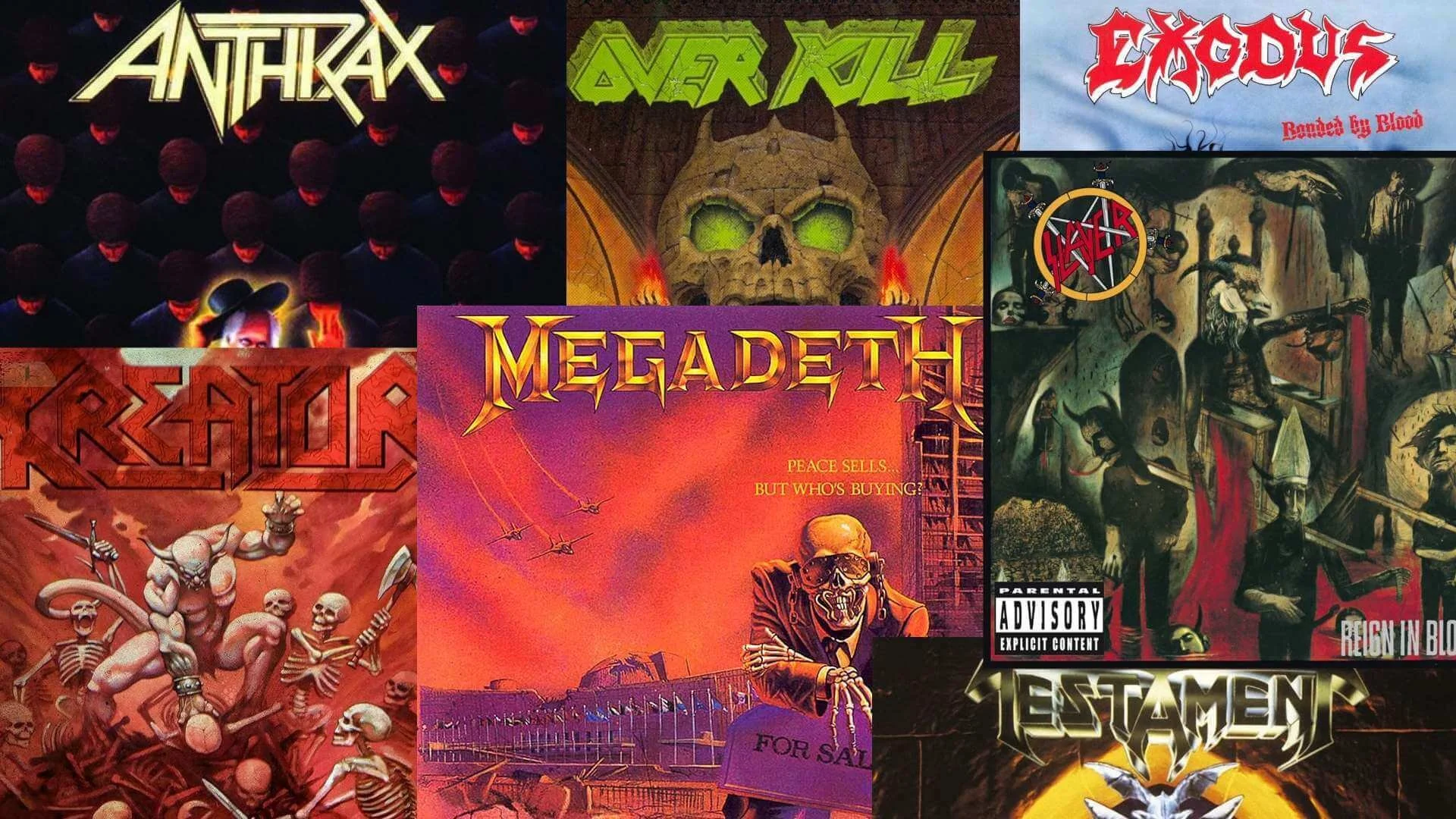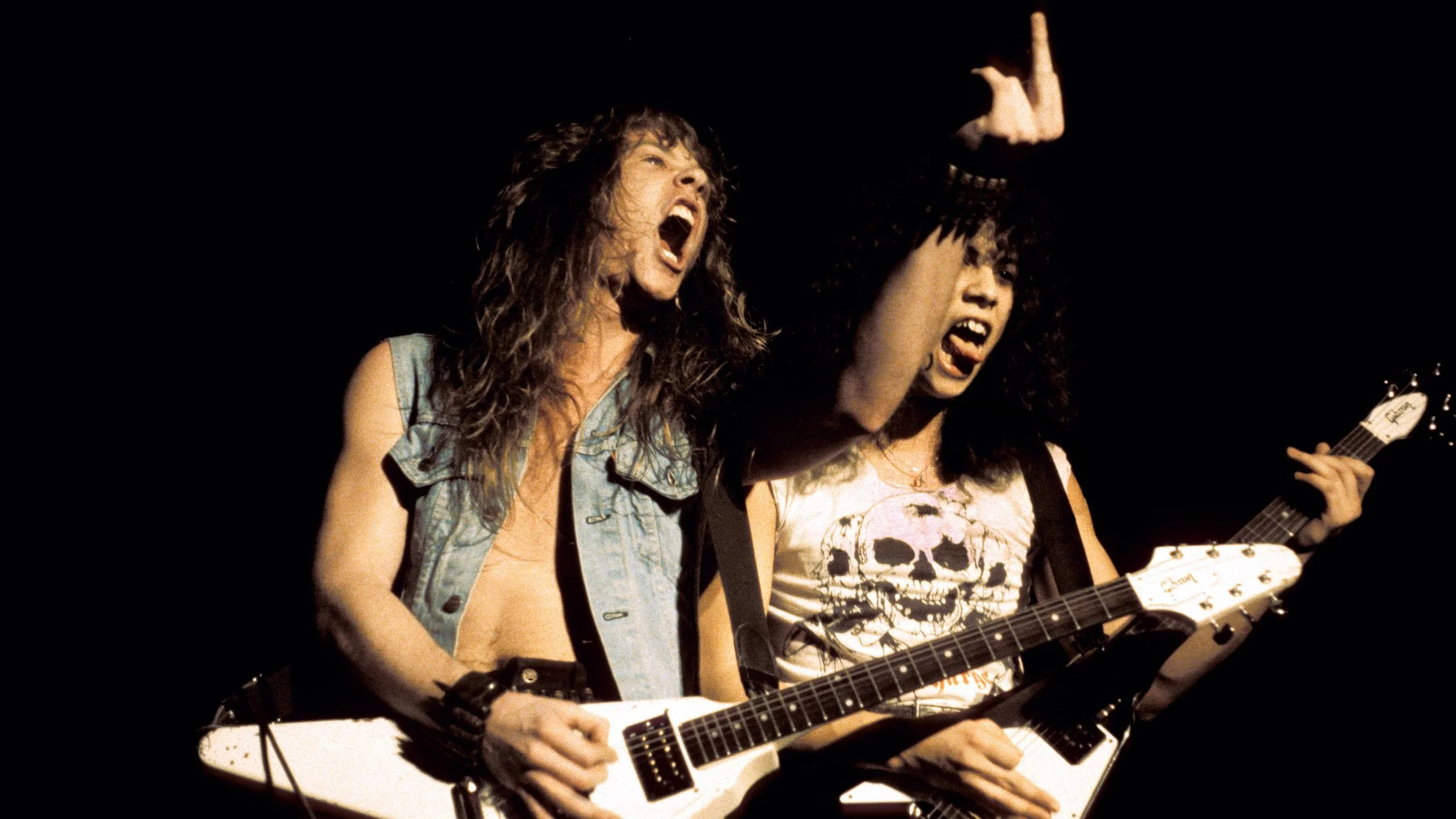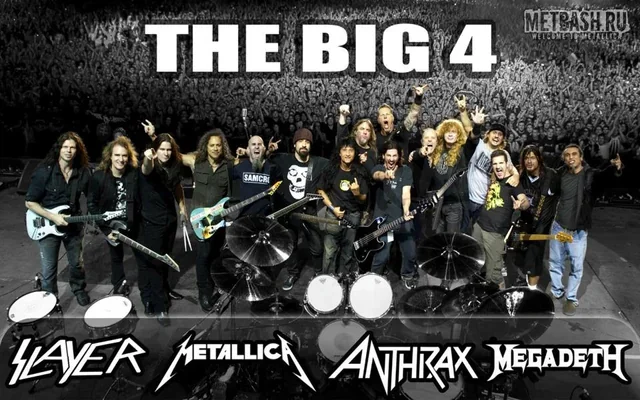Essential Thrash Metal Bands for Beginners 101: From Anthrax to Testament
So, you’ve cranked up your first distorted riff, headbanged a little too hard, and now you’re asking yourself what is thrash metal? or What are the best thrash bands? You’ve come to the right place, Citadelians. Thrash metal, born in the early 1980s, is fast, furious, and unrelenting, like punk rock on steroids armed with double-kick drums and denim jackets.
In this beginner’s guide to thrash metal, we’ll dive into its origins, musical and lyrical hallmarks, its meteoric rise in the ’80s and ’90s, the wild subgenres it spawned, the essential bands and albums to start with, the UK thrash scene (yes, it’s real and good), how it shaped pop culture, and where thrash stands in 2025. Whether you’re discovering thrash history or just want a playlist of beginner-friendly albums, The Citadel has you covered.
Thrash isn’t just music, it’s a cultural earthquake of circle pits, battle vests, and riffs sharp enough to shave with. Strap in, let’s thrash.
What Are the Origins of Thrash Metal?
Thrash metal is one of the most aggressive and influential sub-genres of heavy metal, and its origins can be traced back to the early 1980s. It was born out of a fusion of the speed and precision of the New Wave of British Heavy Metal (NWOBHM) and the raw aggression of hardcore punk.
Young metal fans began asking a simple question: “What if Judas Priest played faster, and punk bands sounded heavier?” The answer was thrash metal, a genre defined by lightning-fast riffs, relentless drumming, and socially charged lyrics.
The Roots: NWOBHM and Hardcore Punk
The foundation of thrash metal lay in the UK’s heavy metal movement of the late 1970s and early ’80s. Bands like Iron Maiden, Motörhead, Judas Priest, and Venom showcased speed, technicality, and darker themes that would inspire the next generation of American musicians.
At the same time, hardcore punk bands such as Black Flag, Dead Kennedys, and Discharge brought a sense of urgency, DIY ethos, and unpolished aggression that resonated with disillusioned youth. Thrash would combine the best of both worlds: punk’s ferocity with metal’s virtuosity.
The Bay Area Thrash Metal Explosion
While thrash metal had several regional hotspots, it was San Francisco’s Bay Area that became its true epicentre. Local venues like Ruthie’s Inn in Berkeley served as breeding grounds for the movement. Bands like Metallica, Exodus, Testament, and Death Angel created a scene that was fast, heavy, and unapologetically aggressive.
Metallica set the standard with their early demos, including No Life ’Til Leather, and their groundbreaking debut album Kill ’Em All (1983).
Exodus, with their 1985 release Bonded by Blood, delivered a raw and uncompromising blueprint for thrash.
Slayer, though based in Los Angeles, added a darker, more sinister edge with hyper-speed songs and satanic themes on albums like Show No Mercy and Reign in Blood.
This Bay Area thrash metal movement became the heartbeat of the genre and influenced countless future bands.
The East Coast and Beyond
Thrash metal was not confined to California, though. On the opposite coast, New York and New Jersey gave birth to their own influential acts:
Anthrax, pioneers of East Coast thrash, stood out with their mix of humour, intensity, and crossover appeal with hardcore punk. Their track Metal Thrashing Mad even inspired the very term “thrash metal.”
Overkill, hailing from New Jersey, brought a gritty, streetwise aggression that helped solidify the East Coast thrash identity.
Meanwhile, other U.S. regions and international scenes also contributed. Megadeth, founded by former Metallica guitarist Dave Mustaine, introduced a more technical and politically charged approach.
Across the Atlantic, Germany’s “Teutonic Thrash” scene, led by Kreator, Sodom, and Destruction, carved out a harsher, more brutal sound. Brazil’s Sepultura would later bring thrash metal to South America with albums like Beneath the Remains.
The Term “Thrash Metal”
The phrase “thrash metal” was popularised in 1984 by journalist Malcolm Dome, who used it in Kerrang! magazine to describe Anthrax’s high-energy anthem Metal Thrashing Mad. Before that, the style was often just referred to as “speed metal.” Dome’s coinage stuck, and soon fans and critics alike adopted “thrash metal” as the official label for the genre.
What Makes Thrash Musically and Lyrically Different?
Thrash’s defining trait? Speed and aggression. These new bands brought rapid-fire riffs, down-picked chugging, galloping basslines, and machine-gun drumming. Solos are often blistering, shreddy, and sometimes sound like the guitarist is fighting for their life.
Vocals vary from barked shouts (Tom Araya, Slayer) to melodic wails (Joey Belladonna, Anthrax). Lyrically, thrash tackled heavier themes than the “sex, drugs, and rock ‘n’ roll” of earlier metal: nuclear war, political corruption, social unrest, religion, and occasionally, horror and sci-fi fun (Anthrax literally wrote songs about Judge Dredd and Stephen King).
If black metal is the sound of a frozen forest at midnight, thrash is a speeding tank crashing through a brick wall while someone yells “MOSH!”
How Did Thrash Rise to Prominence?
Thrash metal’s rise to prominence in the mid-to-late 1980s marked a turning point in heavy metal history. What began as an underground movement in clubs and basements evolved into a global phenomenon. At the centre of this explosion stood the “Big Four of Thrash Metal”, Metallica, Slayer, Megadeth, and Anthrax, whose groundbreaking albums, massive tours, and music video rotations on MTV’s Headbangers Ball brought thrash to millions of fans worldwide.
The Big Four of Thrash Metal
The “Big Four” didn’t just popularise thrash metal; they defined it. Each band brought a distinct style that expanded the genre’s reach while maintaining the aggression and intensity that made thrash unique.
Metallica: Master of Puppets (1986)
Universally regarded as one of the greatest heavy metal albums of all time, Master of Puppets blended razor-sharp riffs, progressive song structures, and socially conscious themes. It was the first thrash metal record to achieve widespread critical acclaim, gaining respect even from listeners outside the metal scene.
Slayer: Reign in Blood (1986)
Produced by Rick Rubin, Reign in Blood condensed thrash into its most ferocious form: 29 minutes of breakneck speed, brutal riffs, and blasphemous themes. Often cited as one of the heaviest and most influential metal records ever made, it redefined the boundaries of extremity in music.
Megadeth: Rust in Peace (1990)
Founded by former Metallica guitarist Dave Mustaine, Megadeth brought a more technical, complex approach to thrash. Rust in Peace showcased virtuosic guitar work, politically charged lyrics, and airtight precision, solidifying Mustaine’s place as one of metal’s most important songwriters and players.
Anthrax: Among the Living (1987)
Anthrax infused thrash with humor, New York swagger, and cultural references, from comic books to Stephen King novels. Among the Living became anthemic for the mosh pit generation, with songs that encouraged audience participation and a crossover appeal that bridged metal and hardcore punk audiences.
By the late 1980s, thrash metal had broken free from underground tape-trading circles and conquered arenas worldwide. Tours by the Big Four filled massive venues, and bands like Testament, Overkill, and Kreator further expanded the genre’s reach. MTV’s Headbangers Ball played a pivotal role, giving thrash bands unprecedented visibility and turning them into household names for metal fans.
What Subgenres Did Thrash Create?
Just like black metal, thrash metal didn’t remain a single unified style, it splintered into multiple sub-genres and hybrid forms, each emphasising different aspects of speed, heaviness, or technicality. From punk-infused chaos to groove-heavy riffing, thrash metal’s influence spawned some of the most important styles in heavy music.
Crossover Thrash
Crossover thrash emerged in the mid-1980s as a raw fusion of hardcore punk’s speed and simplicity with thrash metal’s aggression and riff-driven intensity. Often associated with the skateboarding and underground punk scenes, it delivered short, fast, and chaotic songs that were perfect for mosh pits and DIY venues. Key bands to check out include D.R.I. (Dirty Rotten Imbeciles), Suicidal Tendencies, Stormtroopers of Death (S.O.D.)
Groove Metal
By the early 1990s, some bands began to slow thrash’s relentless speed into heavier, mid-tempo grooves, creating a sound that was both crushing and more accessible to wider audiences. This style emphasised down-tuned guitars, chunky riffs, and headbanging rhythms, often with a swaggering attitude. If you’re looking for a starting point for groove metal bands I recommend Pantera (Cowboys from Hell), Machine Head, Sepultura (mid-’90s era).
Teutonic Thrash
Germany carved out its own distinct thrash scene, nicknamed Teutonic Thrash, which leaned into raw aggression, harsher production, and faster tempos compared to its American counterpart. The “Teutonic Big Three”, Kreator, Sodom, and Destruction, crafted a darker, nastier sound that often brushed up against early black and death metal.
Technical Thrash
For musicians who wanted more than just speed and aggression, technical thrash introduced complex riffs, odd time signatures, progressive elements, and virtuoso musicianship. Often demanding to play and challenging to listen to, it showcased the genre’s sophistication and proved thrash could be both brutal and brainy. You’ve gotta listen to Coroner, Watchtower, Anacrusis, Mekong Delta if you really wanna experience true technical thrash.
Death/Thrash Hybrid
One of thrash’s most important contributions was laying the groundwork for death metal. Early death metal bands borrowed thrash’s speed and riffing style but added darker atmospheres, growled vocals, and heavier themes. Some bands existed in the hybrid space before death metal fully crystallised as its own genre. Be sure to check out Sepultura (specifically Beneath the Remains), Possessed (Seven Churches), and Morbid Saint.
Neo-Thrash / Thrash Revival
Though thrash’s mainstream dominance faded in the 1990s, it never truly died. In the 2000s and 2010s, a new generation of bands reignited the genre, often drawing directly from the Bay Area and Teutonic playbooks while updating the sound for modern production and audiences.
Known as neo-thrash or the thrash revival, this movement brought back the denim vests, circle pits, and DIY spirit for a new wave of fans. The key bands to know here are Havok, Municipal Waste, Power Trip (RIP Riley Gale), Warbringer, Evile. And be sure to listen to our interview with Evile in London below!
Essential Thrash Metal Bands for Beginners: Greatest Albums and Songs
These are the non-negotiables for your thrash starter kit:
Metallica: Master of Puppets (1986)
HMC Recommended Track: “Master of Puppets” — eight minutes of riff perfection.Slayer: Reign in Blood (1986)
HMC Recommended Track: “Angel of Death” — brutal history lesson with one of the most iconic riffs ever.Megadeth: Rust in Peace (1990)
HMC Recommended Track: “Holy Wars… The Punishment Due” — technical wizardry meets political fury.Anthrax: Among the Living (1987)
HMC Recommended Track: “Caught in a Mosh” — the unofficial thrash national anthem.Exodus: Bonded by Blood (1985)
HMC Recommended Track: “Bonded by Blood” — Bay Area aggression distilled into pure thrash venom.Kreator: Pleasure to Kill (1986)
HMC Recommended Track: “Pleasure to Kill” — German precision + savagery = perfection.Sepultura: Beneath the Remains (1989)
HMC Recommended Track: “Inner Self” — Brazilian thrash fury that paved the way for death metal.Testament: The New Order (1988)
HMC Recommended Track: “Trial by Fire” — melodic yet crushing. Chuck Billy’s roar is essential.
The UK Thrash Metal Scene
Sabbat: History of a Time to Come (1988)
Sabbat stood out for their intelligent lyrics steeped in paganism, history, and the occult. Vocalist Martin Walkyier’s snarling delivery, paired with intricate riffs, gave Sabbat a sound that was both mystical and ferocious. Their debut album is often hailed as one of the most sophisticated thrash releases of the ’80s.
Originally influenced by hardcore punk, Onslaught shifted into pure thrash fury with The Force. The record’s unrelenting aggression and razor-sharp riffing put them on par with contemporaries like Slayer and Kreator, and songs like “Let There Be Death” remain cult classics in the thrash canon.
Xentrix: Shattered Existence (1989)
Often referred to as one of the UK’s “big names” in thrash, Xentrix delivered a sound that was catchy, riff-heavy, and distinctly British. They blended melody with aggression, giving them crossover appeal. Their cover of the Ghostbusters theme (released as a single) showcased their tongue-in-cheek humor, while Shattered Existence cemented their reputation as serious thrash contenders.
Other noteworthy UK thrash acts include Acid Reign who infused thrash with a quirky sense of humor and social commentary. As well as, Deathwish who delivered politically charged, no-frills thrash energy.
Is Thrash Metal Dead?
Far from it, thrash metal has proven itself immortal. Despite countless claims over the years that the genre had peaked or become irrelevant, thrash has survived every supposed death knell. It weathered the grunge explosion of the early 1990s, the rise of nu-metal in the 2000s, and even the algorithm-driven chaos of the streaming era. In 2025, thrash metal continues to thrive, both in underground clubs and on stadium stages.
Of course, the thrash scene has changed over the decades. Many of the original fans are now older, maybe a little balder, and sometimes paying the price for decades of headbanging with sore backs and stiff necks. But the energy hasn’t disappeared, it’s simply evolved. The mosh pit is as alive as ever, filled with both grizzled veterans and eager newcomers who weren’t even born when Reign in Blood first dropped.








